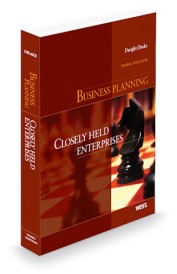Mitt Romney’s Bain Capital experience has quickly become a threshold issue in the race to pick a Republican nominee to take on Obama. (See last post “Romney: A Vulture?”) If Romney secures the nomination, Bain Capital will remain headline news throughout the entire general election campaign as the Democrats pull out all stops to portray Romney and his Bain buddies as greedy, job-killing parasites.
What’s the truth about Bain? Here’s my recap of the key facts.
1. Bain was founded in 1984. Romney was its CEO from 1984 to 1999. He resigned his position to go fix the 2002 Olympic Games, which were in a world of hurt at the time. Romney’s colleagues at Bain have publicly characterized Romney as an “excellent CEO.”
2. During Romney’s tenure, Bain engaged in both venture capital investing (taking minority positions in start-up companies) and private-equity investing (investing in failing mature companies that needed capital and executive talent). Although the venture capital deals produced some big winners such as Staples and Sports Authority, the private-equity action generated the big profits during Romney’s reign at Bain.
3. There are about 2,300 private-equity firms. Bain has earned a reputation of being one of the very best of the breed. Its first fund in 1984 raised $37 million. Today, it manages roughly $66 billion of investment capital that has come from a broad range of investors that include public pension funds and college endowments.
4. During Romney’s tenure, Bain’s private-equity strategy was to invest in deals that were considered high risk by industry standards. The strategy paid off big for Bain’s investors. Bain generated gains of over $2.5 billion for its investors, producing annual yields in the 50 to 80 percent range and establishing one of the absolute best track records in the industry. Steven Kaplan, a professor of finance at the University of Chicago’s Booth School of Business, described Bain’s private-equity performance as follows: “For every one that went bankrupt, they had one that was a screaming success. The overall effect was terrific performance for the firm’s investors.”
5. The Wall Street Journal reviewed the 77 significant investments that Bain made during Romney’s tenure as CEO. Ten of the private-equity investments produced stellar returns, generating $1.75 billion in gains, 70 percent of Bain’s total gains during the period. Seventeen of the 77 companies eventually went into bankruptcy (most often a Chapter 11 reorganization) or shut down completely by the end of the eighth year after Bain’s investment. Of these, only five were still controlled and run by Bain at the time of the bankruptcy or shutdown. The others were run by another firm or sought bankruptcy protection after Bain’s involvement in the company ended.
6. Bain often had to terminate employees and lean out troubling companies that were on the ropes and in need of fixing. It’s the norm in an industry that promises returns to equity investors by saving dying companies with investment capital and tough, superior management. A study by the Census Bureau (cheered by Romney foes) confirms that companies bought by private-equity firms experience abnormally high job losses soon after the transition. The same study also confirmed that such companies usually grow stronger and end up producing jobs in excess of the norm during the ensuing decade.
7. Bain profited from some companies that ultimately failed and left employees jobless. Romney opponents have twisted the saga of these enterprises to support their “vulture” claims. Following are summaries of the real facts for three of the companies most often cited by Romney foes.
8. In 1993, Bain and two partners (GE Capital and Leggett & Platt) took over a century-old Kansas City steel plant known as GSI that badly needed investment capital for modernization. The Bain-led group pumped $100 million of investment capital into the plant, merged the plant with the company’s Georgetown plant within two years, and raised an additional $250 million through two bond offerings. Bain was paid roughly $900,000 in management fees during the Romney period (1993 thru 1999), and its investors ultimately yielded an estimated $50 million on an investment of $24.5 million. In the late 1990s, union relations deteriorated, steel prices nosedived, and raw materials and energy prices ballooned. The company filed for bankruptcy reorganization in 2001. The Georgetown plant was sold and temporarily shutdown, and then reopened over a four year period. Hundreds of Georgetown employees lost their jobs during the temporary shutdown. Georgetown locals blame the temporary shutdown on the owner that followed Bain, and most had no knowledge of Romney’s involvement in the company until the candidates started making their allegations. The plant is now owned the world’s largest steelmaker and operates two shifts daily. Bain defends its actions at GSI, claiming that it generated substantial investment capital for the company and committed “many thousands of hours to upgrade its facilities and make the company more competitive.”
9. In 1996, Bain invested $41 million in DDi Corp., a maker of circuit boards located in Anaheim, California. Bain strengthened DDi, merged it with another company in which Bain owned a stake, and took the combined company public in 2000. Bain then sold its public shares into the market, generating a substantial yield (roughly $157 million) for its investors. The subsequent burst of the dot.com bubble badly hurt the company. It reported huge sales drops in 2001 and 2002 and was forced to cut its workforce by 40 percent. DDi defaulted on its debt in late 2002 and filed for Chapter 11 bankruptcy reorganization in 2003. Bain controlled two of DDi’s six board seats at the time of the bankruptcy. DDi emerged successfully from the bankruptcy reorganization and continues in business today.
10. In 1998, Bain purchased UniMac, a washing-machine plant in Marianna, Florida. This is the primary company featured in the anti-Romney film entitled “When Mitt Came to Town,” produced by a pro Gingrich group. Bain ran the company until 2005 and then exited by selling its interest to the private-equity arm of the Ontario Teachers’ Pension Plan. In 2006, the Canadian purchaser shutdown the Marianna plant and shifted all operations to Ripon, Wisconsin. The three ex-UniMac Marianna employees exploited in Gingrich’s film now publicly claim that they received generous promotions while Bain owned the company, that they knew that Bain had nothing to do with the 2006 Marianna plant closure, and that they were duped by the Gingrich filmmakers. Mike Baxter, one of the ex-UniMac employees featured in the film, says that he and the other two ex-employees in the film were approached in September and offered an undisclosed sum of money to give statements for a general documentary on factory closings in the U.S. In expressing his disgust with the makers of the anti-Romney film, Baxter recently stated, “I guess I have to apologize to Mitt by voting for him.”
These Bain Capital facts, in a nutshell, tell a good success story. Bain has delivered for its investors while strengthening many companies. Nothing suggests that it was a “vulture” that sought to profit by “bleeding out” and destroying companies. Romney claims that Bain has invested in companies that, to date, have created 100,000 net new jobs. Given the fact that Staples and Sports Authority alone have created over 94,000 jobs, it’s probably a provable claim.
But does the 100,000 job claim (however calculated) really matter? Bain’s mission wasn’t to create jobs, although job creation was a natural byproduct of its success in building companies. As a private-equity firm responsible for the money entrusted to it by others, Bain’s charge was to generate yields for its investors by making smart investments, skillfully managing those investments, and then getting out and cashing in at the right time. And there’s absolutely no doubt that Bain mightily pursed that charge with great success.
Most people have little understanding or appreciation for the value of firms that accumulate and deploy risk capital and executive talent to build and save companies. So, as we are now witnessing, it’s a piece of cake for a public figure to whip up the uninformed by taking retroactive potshots at tough job-cutting business decisions and to twist and distort old facts to demonize the decision makers. And, as is always the case in politics, perception can quickly become reality. The only effective counter is straight talk about the specifics from those who called the shots and are under attack.
And that leads to the big question: Why has Romney left everyone out in the cold on this one? He just hasn’t stepped up to the plate on Bain. His general statements about capitalism and free enterprise, job-cutting comparisons to Obama’s activities at GM, and cute references to Staples and Sports Authority aren’t going to cut it. Why does he appear so defensive, almost apologetic for the fact that some of Bain’s investments led to job losses? Does he have something to hide?
Given the years and money that Romney has spent in preparing for this campaign, one would expect that he would aggressively attack the attack on the centerpiece of his career and his campaign. It’s an opportunity to showcase his expertise, to get specific, to set the record straight, and to strengthen his message and credibility. Why not take the most powerful page from Ross Perot’s playbook and become a real educator on private-equity investing, his experiences, and how those experiences have prepared him for the biggest turn around challenge of all time?
There are some legitimate reasons to doubt Romney. His Bain experience doesn’t have to be one. But if Romney continues to nonchalantly finesse the issue with slick thirty second ads and glib one-liners, Bain could end up being the force that derails his entire cause.

 January 19, 2012
January 19, 2012 




Comments are closed.